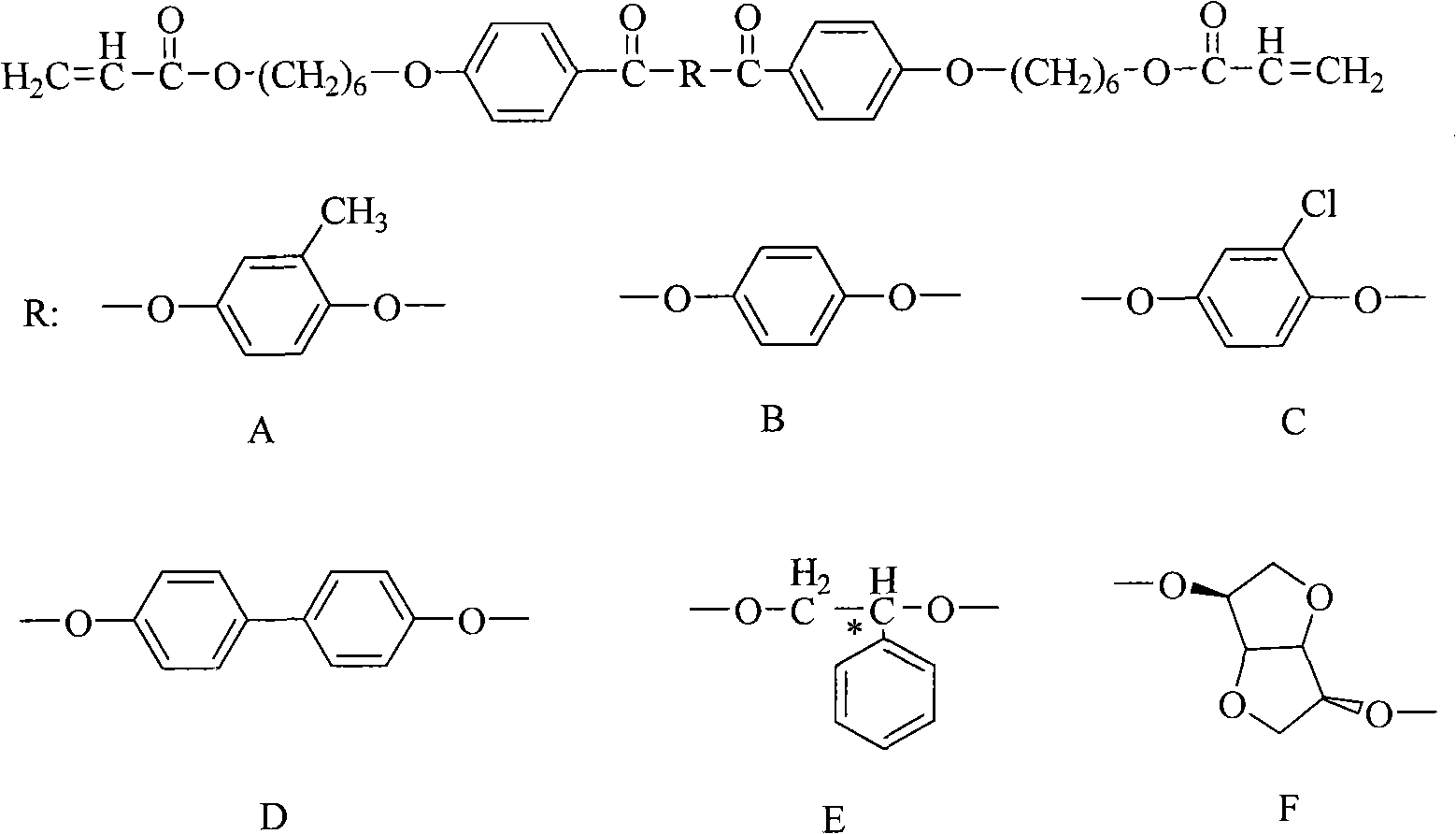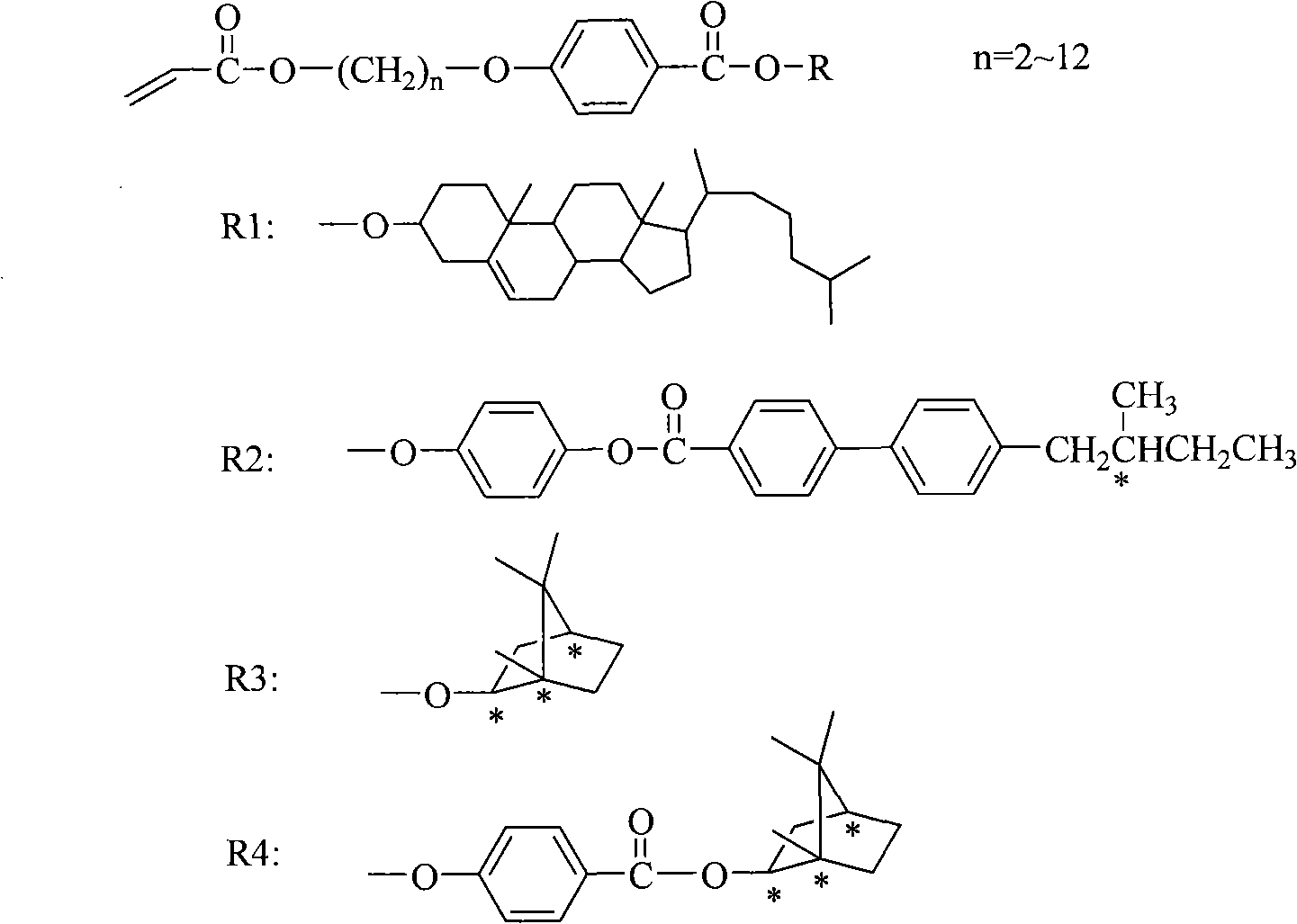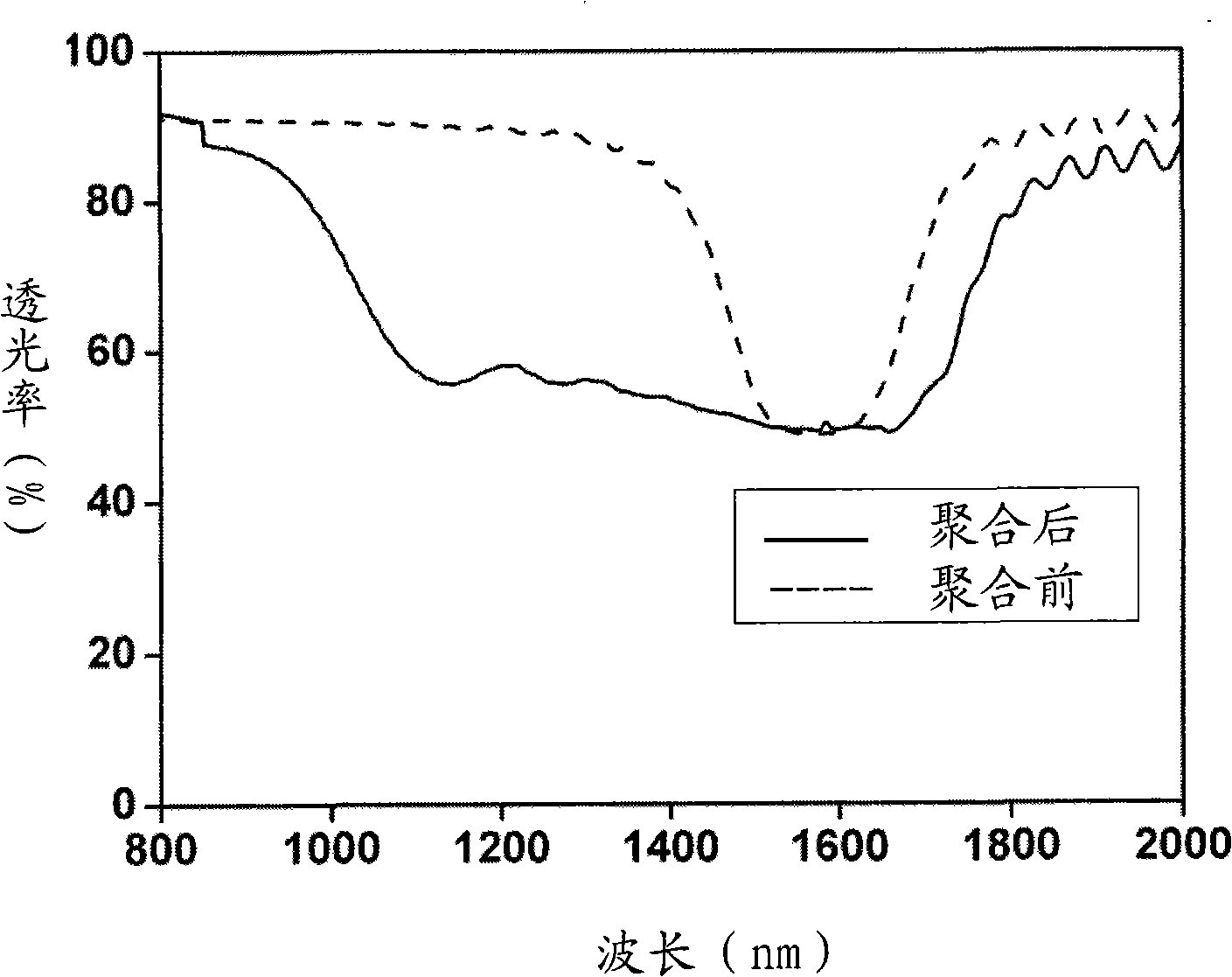Method for preparing LCD polarized sheet with wide wave reflection characteristic
A technology of wave reflection and polarizer, which is applied in the field of preparation of liquid crystal polarizers with broad wave reflection characteristics, can solve problems such as difficult control and complicated process, and achieve the effects of low production cost, simple production process and high transmittance
- Summary
- Abstract
- Description
- Claims
- Application Information
AI Technical Summary
Problems solved by technology
Method used
Image
Examples
example 1
[0028] E7 from Merck Company was used as the nematic liquid crystal, and CB15 was used as the chiral compound. Here, the content of CB15 is selected to be 15wt%, and the reflection band of the cholesteric liquid crystal is 1500-1700 nm. In the formed cholesteric liquid crystal, add 5wt% polymerizable monomer A ( figure 1 ), the photoinitiator adopts 651, and the content is 5.0wt% of the total mass of monomers. The balance is nematic liquid crystal, the mixture is poured into a liquid crystal cell with a cell thickness of 30 μm and antiparallel, and the liquid crystal is in the state of planar texture, using 365nm, 0.1mW / cm 2 The ultraviolet light was irradiated at 5°C for 5 hours, the reflection band increased to 1000-1800nm, and the reflection of about 800nm band was realized, and the transmission spectrum was as follows: image 3 As shown, the network morphology of the polymer in the system is as follows Figure 5 shown.
example 2
[0030] The nematic phase liquid crystal that uses is the SLC-1717 of Slichem Company, and the bifunctional monomer is compound A ( figure 1 ), the chiral monofunctional monomer selects M1 ( figure 2, n=2, the chiral unit is cholesterol), and the whole system is a left-handed helical pitch. The specific ratio is as follows: the content of chiral compound S811 is 15wt%, the content of monomer A is 5wt%, the content of chiral monofunctional monomer M1 is 10wt%, the photoinitiator is 651, and the content is 5.0wt% of the total mass of monomers , the balance is nematic liquid crystal, and the thickness of the liquid crystal cell is 25 μm. At 55°C, 365nm (0.9mw / cm 2 ) under UV conditions for 30 minutes. The reflected waveband ranges from 586 to 782nm, and the reflection bandwidth is about 200nm. The spectrum is as follows Figure 4 as shown, Image 6 It is a model diagram of the distribution of components in the mixed system after polymerization.
example 3
[0032] The nematic liquid crystal used is Merck E7, compound A is used as the difunctional monomer, M2 (n=6, chiral unit is R2) is used as the chiral monofunctional monomer, and general 184 is used as the photoinitiator. The whole system is a right-hand pitch. The content of each component in the system is as follows: the content of chiral compound CB15 is 20.5wt%, the content of monomer A is 5.0wt%, the content of M2 is 8.0wt%, the photoinitiator is 651, and the content is 5.0wt% of the total mass of the monomer %, the balance is nematic liquid crystal, and the thickness of the liquid crystal cell is 25 μm. At 25°C, 365nm (1.5mw / cm 2 ) under UV conditions for 30 minutes. The reflected wavelength range is 750-1400nm, and the reflection bandwidth is 650nm.
PUM
 Login to View More
Login to View More Abstract
Description
Claims
Application Information
 Login to View More
Login to View More - Generate Ideas
- Intellectual Property
- Life Sciences
- Materials
- Tech Scout
- Unparalleled Data Quality
- Higher Quality Content
- 60% Fewer Hallucinations
Browse by: Latest US Patents, China's latest patents, Technical Efficacy Thesaurus, Application Domain, Technology Topic, Popular Technical Reports.
© 2025 PatSnap. All rights reserved.Legal|Privacy policy|Modern Slavery Act Transparency Statement|Sitemap|About US| Contact US: help@patsnap.com



